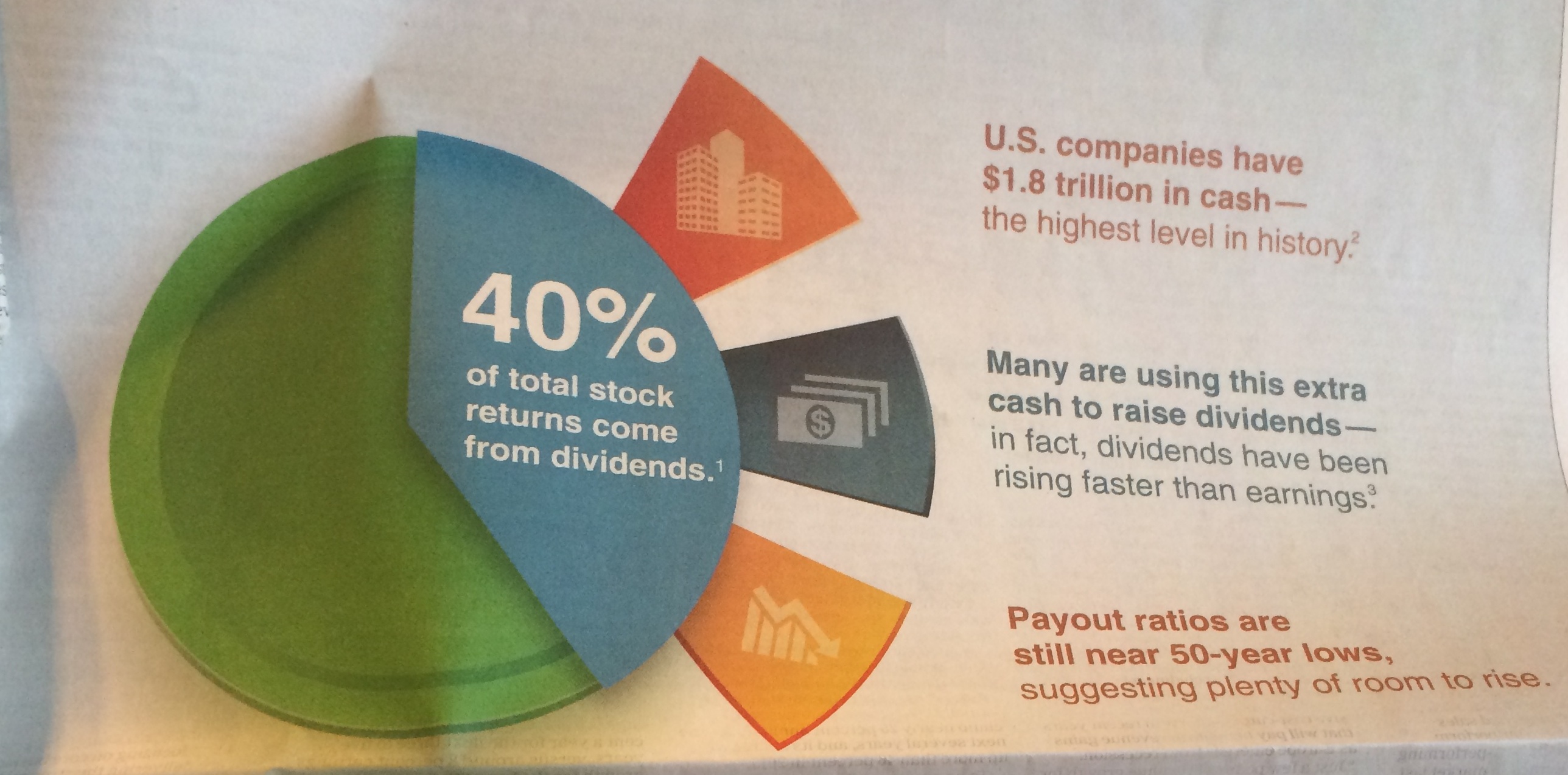40% of total stock returns come from dividends, but what are dividends?
From Part 2 of my book:
When you purchase shares in a company, you become a partial owner of that company. When buying shares on a stock market through a brokerage, you’re buying shares of a public company – a company that has offered shares to the public market as a way to raise money. You probably do business with lots of public companies like AT&T, Starbucks, and Ford.
Buying shares in a public company is just like investing in a local restaurant or buying shares in a startup – at least conceptually. You give the business money in exchange for a percentage of ownership.
Many public companies take all the profit and put it back into the business. Some return some of that profit to the owners (shareholders).
Dividends are the return of that profit.
Of course, there are details I’m skipping over.
What are dividends? They’re payments you get as an owner of a company because you’re the boss. Click To TweetWriting about finance in a human voice can be frustrating at times – and this one of them. Many companies who pay dividends don’t actually have profits, or pay out more than they have in profits. This is not always a problem, as the way accounting principles allow companies to define profits don’t always reflect cash flow.
For simplicity, I stated that dividends are a return of the profit, which is accurate enough for the sake of helping answer the question: What are dividends?
Dividends are payments you get from companies you own. For conservative, established companies (the ones we like for safety), these dividends come quarterly (every three months).
Dividends are the gift that keeps on giving, you get them every quarter. Pick the right companies, and they go up faster than inflation too, so you are increasing your purchasing power over time.
Don’t need the cash now? Reinvest those dividends and earn even more in the future.


Let me know what you think